I first heard the story of the Cutty Sark and the Famous Tea Clipper Races shortly after I began working for a North American tea importing company. I learned that in the mid 1800s British merchants were so keen to bring back the first shipment of tea from China that they built thoroughbred sailing ships and raced them full of tea three-quarters of the way around the globe. They left China together, sailed for months at a time, and arrived in London within minutes of each other.
I was enthralled. For several years I read every book and article I could on the subject. All the vice and ambition involved in a round the world boat race, complete with sabotage, murder, and rivalries among the crews. It made for a more fascinating story with every turn of the page.
So, on a recent trip to London I felt a bit like a religious pilgrim as I walked the streets of Greenwich on my way to visit the world’s last great tea clipper.
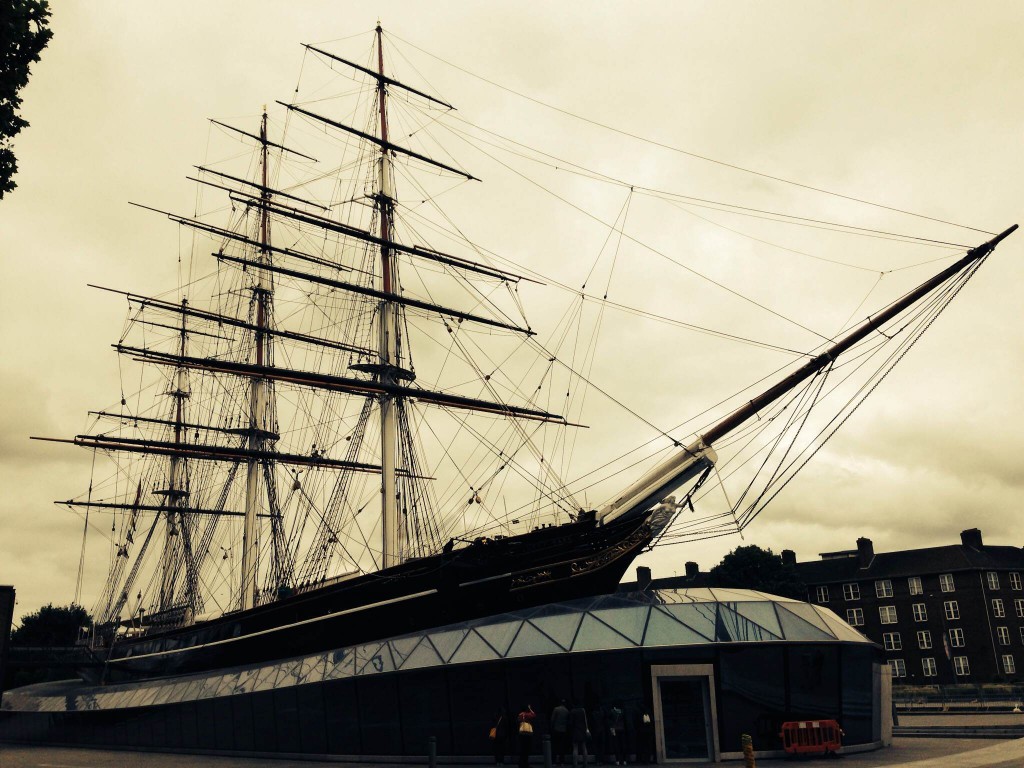
Cutty Sark was built at the peak of tea-racing fervor, exhibiting all the technological advances of the time from her “Aberdeen bow” to her composite hull of teak, rock elm, and iron. Every line, every sail, every spar and inch of deck were built for speed. All accounts from the men who sailed her and sailed against her say she was one of the fastest ships to ever touch water, setting some records that have never been broken by another ship of her size.
Yet for all her glory and prowess Cutty Sark also exemplifies the end of an era. She was one of the last great tea clippers built due to the advent of the steam engine. Steam ships, though slower than sailing ships, could navigate the locks at the newly built Suez Canal, and thus avoid the continent of Africa.
Willis & Sons, the company which commissioned the Cutty Sark, eventually sold her to a Portuguese shipping company as profits from the tea and wool trades began to wane. She spent several years shuttling coal until an English businessman bought and returned her to the United Kingdom where she was used as a sail training vessel. In 1954 she was transformed into a museum and tourist destination and has remained so ever since.
The latest iteration of the Cutty Sark museum was constructed after a devastating fire that took place in 2007 while the ship was undergoing restoration.
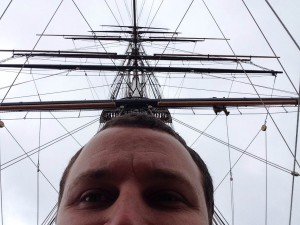
The first thing that struck me as I saw the masts standing proudly above the surrounding buildings is how tall it is. I had poured over hundreds of images of this ship, but to stand craning my neck to see the top of the mainmast was unlike anything else.
The Cutty Sark Trust was criticized in some circles for choosing to raise the ship in dry dock rather than returning her to sailing form again, but I believe they made the best choice. The unique museum is unlike any other. By raising the ship above the dock they opened a new avenue for viewing and enjoying the vessel , allowing viewers to better appreciate its length and girth while easing crowd density throughout the exhibit.
Also, the idea that a beautiful ship is meant to sail until it founders and sinks, is both romantic and short-sighted. The Cutty Sark is now safe in her glass enclosure and not at risk of being lost forever to an unfortunate storm or the ineptitude of a would-be captain. She is safe for future generations to learn from and enjoy, which is her role now. Her sailing days have long since passed.
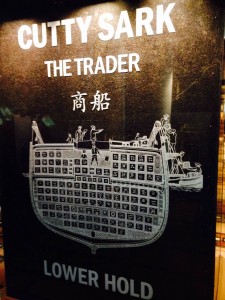
The museum is laid out in such a fashion as to give the public complete and convenient access to all of her decks without compromising the ship’s original appearance or dramatically altering her structure. A great deal of thought was given to the way guests move from exhibit to exhibit. The flow is both natural and climactic, leading you in the end to stand on deck next to the towering masts, rigging and crew quarters. From there you can move on to the museum store at ground level or the cafe beneath the vessel at your leisure. The largest assembly of figure heads in the world stands beneath the bow, which is itself an impressive and interesting study of the human need for monument and mascot alike.
Comparing the Cutty Sark to other vessels, say, the now dilapidated Queen Mary docked in Long Beach, California is almost unfair. It is clear that the Cutty Sark Trust takes pride in the history and preservation of the ship, and will continue to preserve it for generations to come.
Many exhibits were immensely helpful for filling gaps in my research.
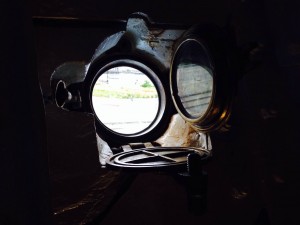
The extent of decay the ship had undergone before being restored was amazing to me. As was the size of the lower and tween’ decks. The crew had to sleep on the upper decks because there was no space anywhere else.
I had read several references to the Cutty Sark owning signal cannons, but it was difficult find out more without actually visiting the vessel. It turns out that the ship was equipped with small cannons and outdated firearms to fend off pirates, but thankfully only had to issue them to the crew to ward off an attempted mutiny.
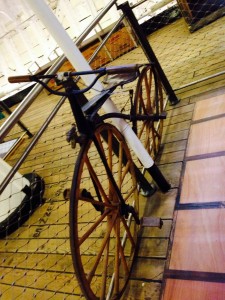
Captain Richard Woodget’s pistol is on display at the nearby National Maritime Museum. The capstan used by a first mate to bludgeon one of the crew members to death in one of the ship’s uglier episodes, a journey referred to as “The Hell-Ship Voyage.” The sheer size of the thing probably impressed me most, as did the personalities that inhabited her. You can see, for instance, a bicycle that was purchased by one of her captains. He taught himself to ride it on deck.
There were many other things I found fascinating as well. Things that I hope to incorporate into my own writing soon. As someone who has worked in a modern tea trading house, sitting beneath the keel of this massive ship, sipping tea and thinking about the history of the world was certainly a fitting end to my visit.
If you are ever in London and have even the slightest interest in maritime history, sailing, the British empire or tea, then the Cutty Sark is certainly worth adding to your itinerary. Not only is the ship itself a treat, but Greenwich is swarming with all manner of attractions that will interest the student of all things maritime.
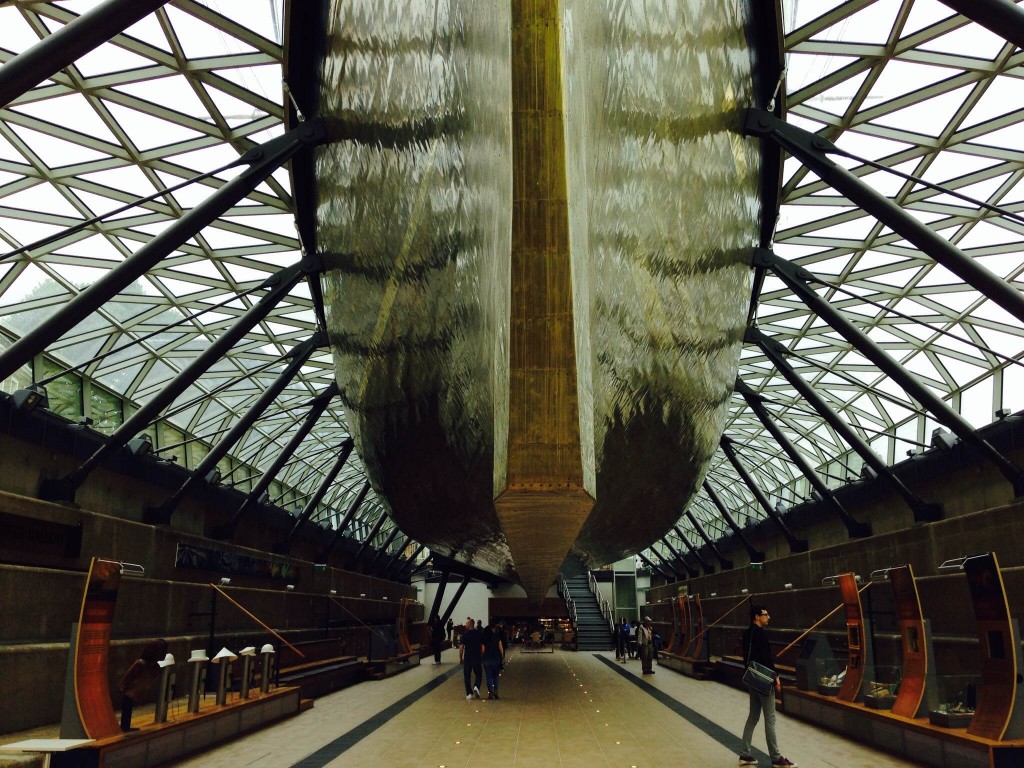
Just a few blocks from the Cutty Sark there are plenty of artifacts on display at the National Maritime Museum to make any devotee of Patrick O’Brian or C.S. Forester swoon. Here you can find everything from the Lord Horatio Nelson’s bullet-holed uniform, to a full-sized paddle boat engine, to a cannon ball fired during the first Opium War. The best part is that it’s completely free!
The National Maritime archives and Caird Library are some of the best I have ever visited. Access to all materials is available once you have registered (at no charge). The staff at the archives were spectacularly helpful and went above and beyond to see that my research needs were met. I highly recommend them.
Cutty Sark’s Hours and admission prices are here.
The National Maritime Museum’s Hours are here.
Other sites in the area include the National Observatory, the Royal Naval College, the Devon House, the Queen’s House, and others.
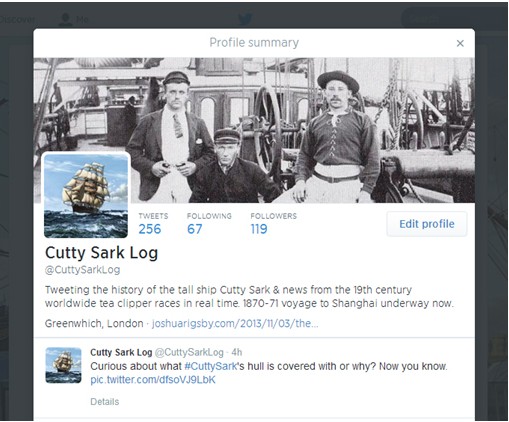
I maintain a Twitter account that follows the history of the Cutty Sark and the famous tea clipper races in real-time. Please follow @CuttySarkLog by clicking here.
Are you interested in tall ships, tea clippers, or the Cutty Sark? Click the +FOLLOW button on the bottom right of your screen to be notified when I write another article on this topic. Thanks!









